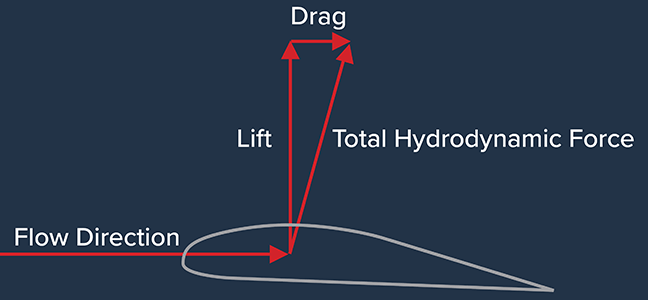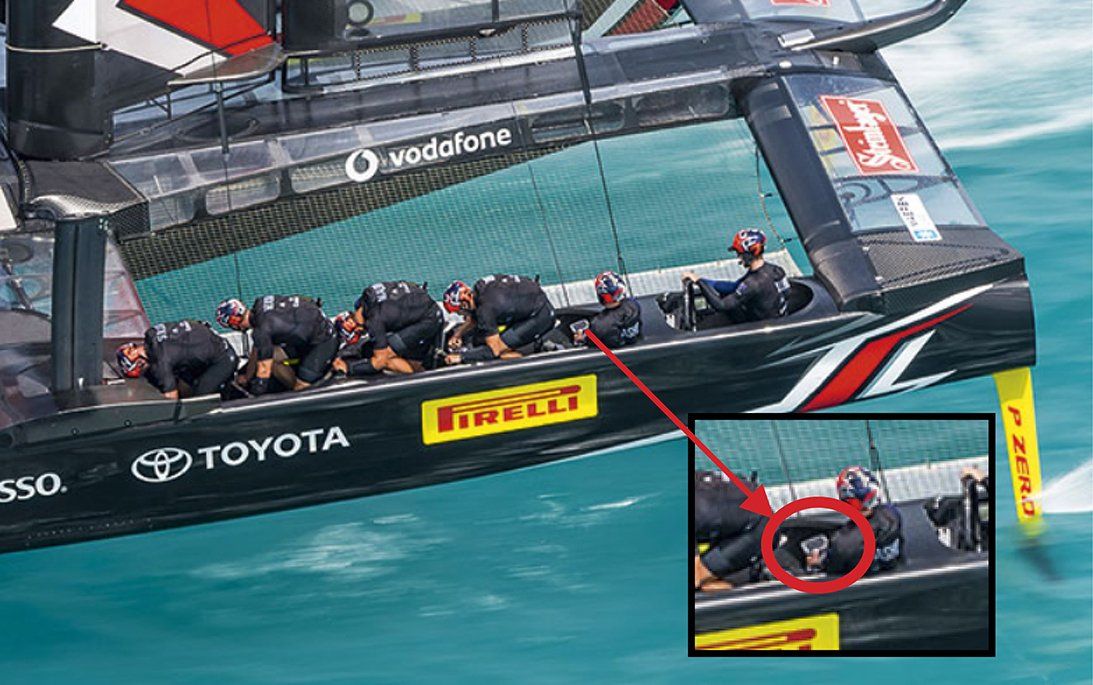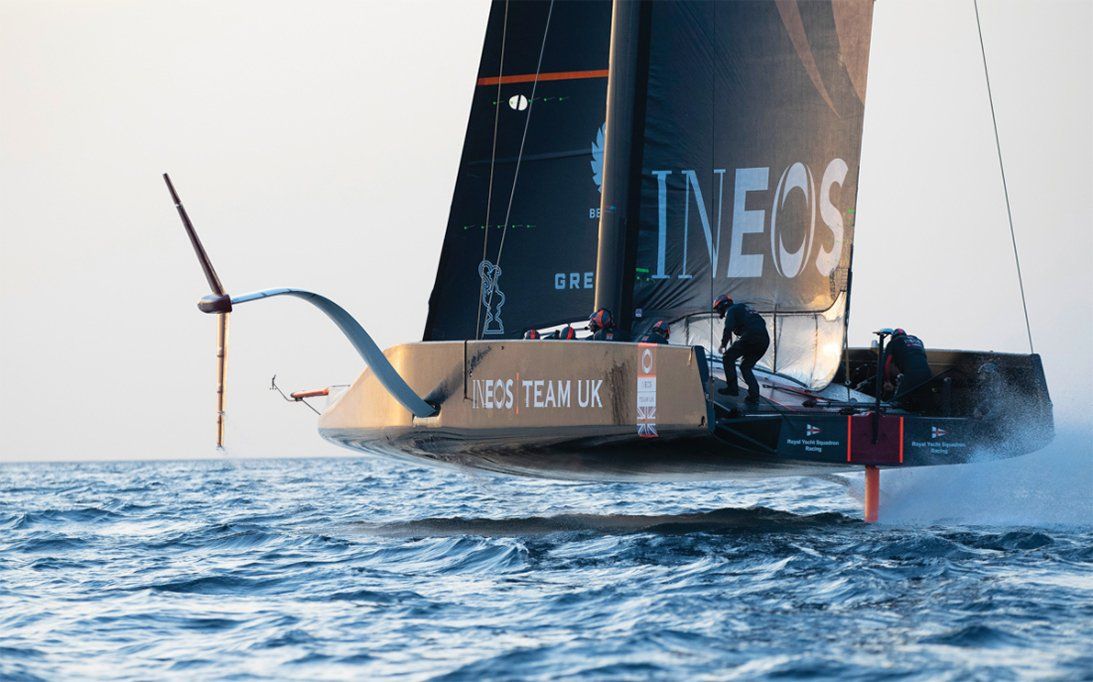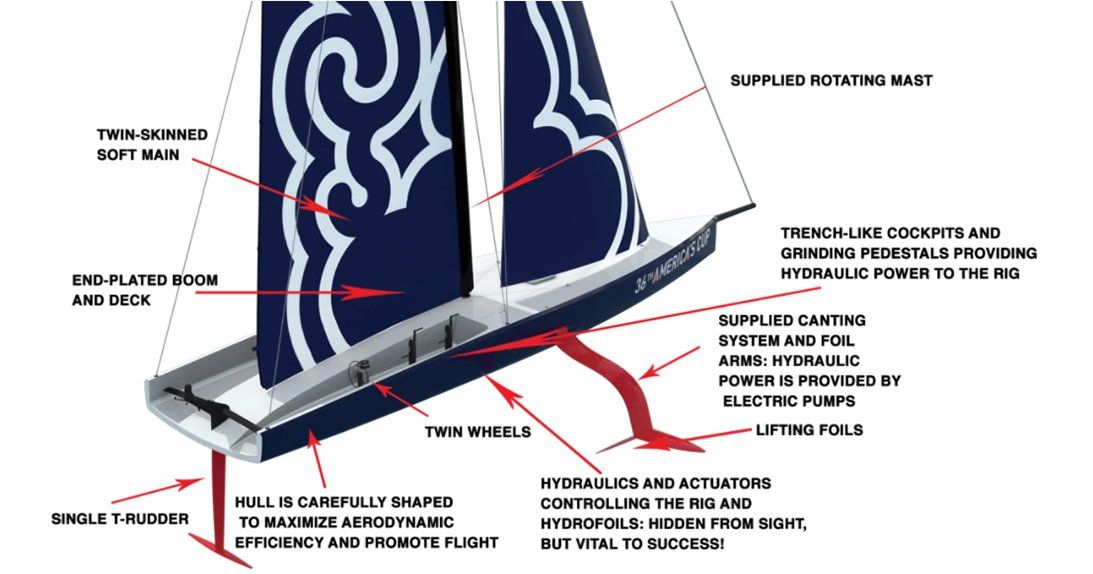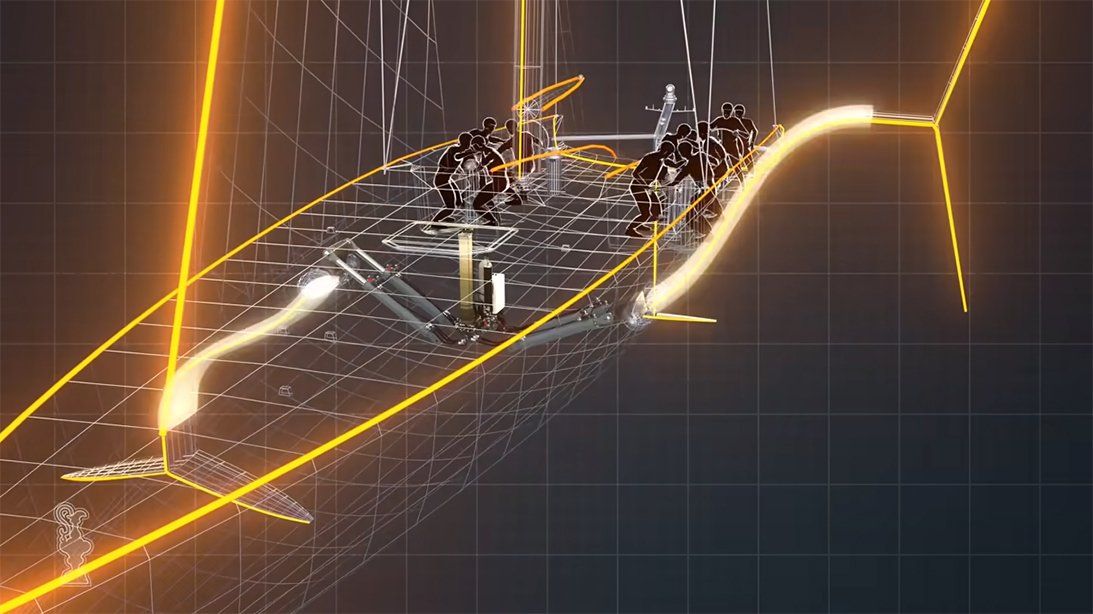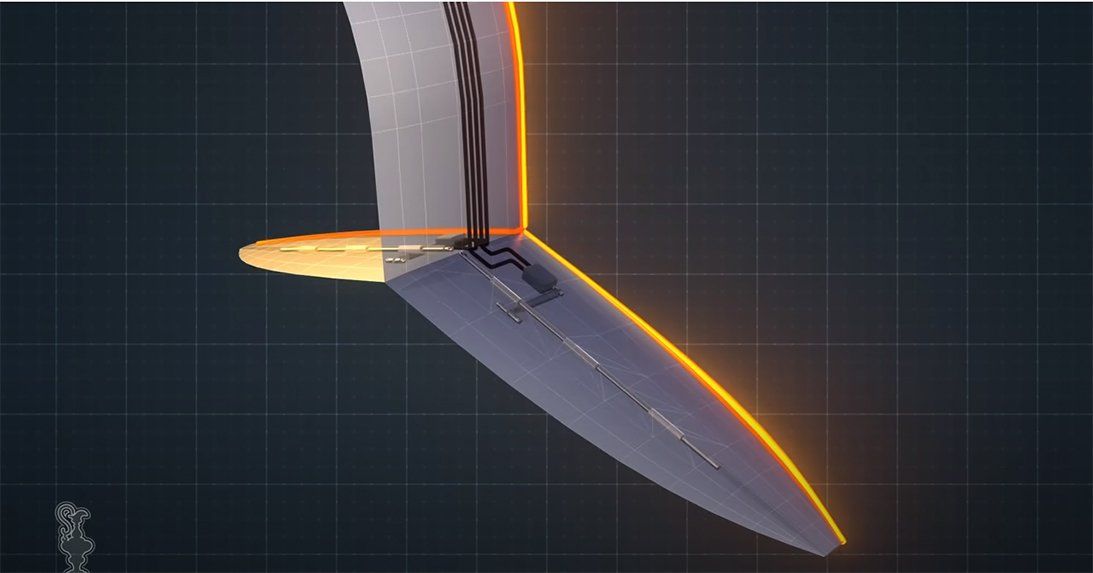Beta Solutions Blog
Electronics and the America's Cup
Date: February 11, 2021
“When you push off the dock, your life is in the hands of computers – and the guy piloting the boat out of the water, of course. All the systems on the boat, other than the winches rattling around, rely on computers…”
- Freddy Carr of Ineos Team UK1
Introduction
With much anticipation (and no-doubt “relief” considering Covid 19) the 36th America’s Cup is well underway! It has been exciting to see the boats of the three challengers (Luna Rossa Prada Pirelli, Ineos Team UK and NYYC American Magic) battling it out for the Prada Cup - with NYYC American Magic already sent packing. The winner of the Prada cup will compete against (the defender) Emirates Team New Zealand - with the aim to win the oldest international sporting trophy and sailing’s ultimate prize - the America's Cup.
Even if you are not a sailing fan, it’s difficult to not be taken aback by the sight of these 75 foot hi-tech mono-hull foiling boats - flying above the water at speeds topping 50knots (93 km/h). At those speeds (often more than 3 times the actual wind speed) the forces these AC75 boats generate are so large (tonnes) that it is understandable that the sailing crew need some help from some onboard electronics and actuators.
This blog takes a look at the role that electronics plays in the modern America's Cup era and how they are ultimately making these boats go faster than ever before.
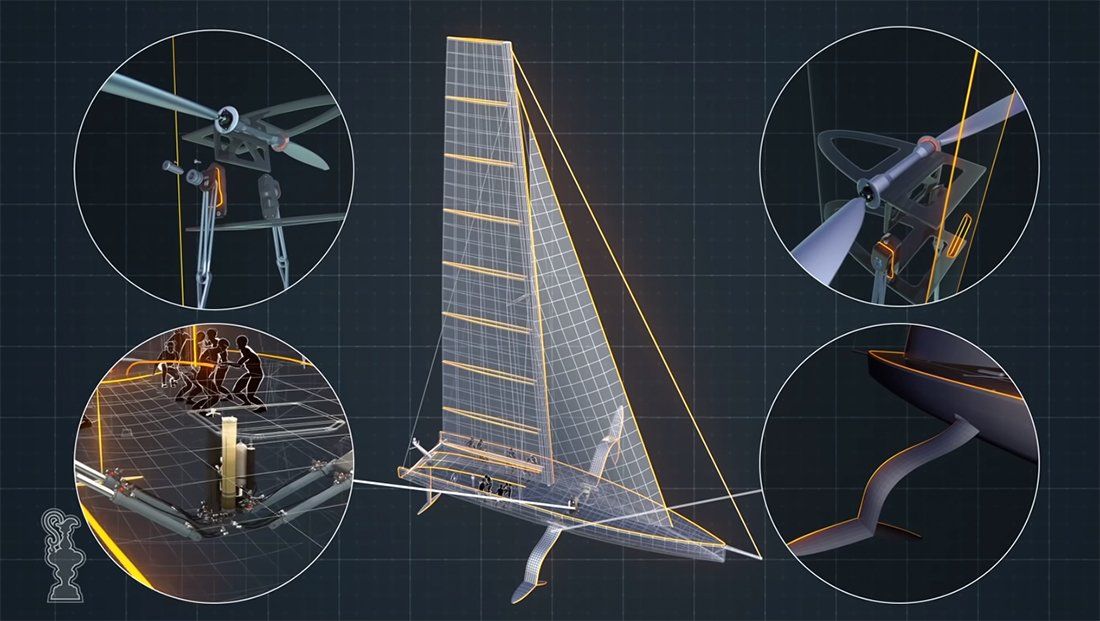
Caption 1: More than ever before - electronics and control systems are playing a pivotal role in the America’s Cup.2
Background
Electronics is an umbrella term which can extend to a whole manner of different “tech” used within the America’s Cup. While it’s safe to say the use of electronics has been increasing for decades, it is nigh impossible to know exactly what new electronics a team has implemented during a specific campaign - as it is often highly confidential and shrouded in secrecy due to the competitive advantage it brings.
Nevertheless, we know that since the 1980s3, boat designers have been increasingly using computers to help with CAD design - including copious amounts of hydrodynamic and aerodynamic simulations.
On board the boats, it has also long been the case that teams will use computers and visual displays to assist the sailing crew with various functions - such as:
- Communications - enabling the crew to be in constant communication.
- Navigation - Assistance with navigation, including monitoring course boundaries, ley lines and boat speed. (With this data, the boat's Velocity Made Good (VGM), can be calculated - which is one of the most important metrics in sailing as a higher VGM will get you to the next mark sooner).
- Race start - Assisting the crew to ace the start, by optimising the “time on distance”. (In other words informing the crew when to “gun it” for the start line - not wanting to be too late nor too early).
34th America's Cup - A New Era
“It was August 2012 when the sailing world was turned upside down by a 72 foot catamaran flying in the Hauraki Gulf. Emirates Team New Zealand had brought the foils to the America’s Cup and changed the face of top-level yacht racing forever. Since then the increase in performance for America’s Cup boats has been greater than at any point in the 170-year history of the event.”
- americascup.com4
The hydrofoils that Team NZ introduced to the America’s Cup work in a similar way to aircraft wings, in that they create lift. As boat speed increases the hydrofoil correspondingly creates more lift, until the lift force exceeds (and then balances) the weight of the boat, lifting the hull out of the water and dramatically reducing drag in the process. Lower drag means the boat can travel faster for the same amount of energy.
Caption 2: Hydrodynamic Force.5 Hydrofoils essentially minimise drag, by lifting the “draggy” boat hull out of the water. Less drag equals more speed for the same energy.
Despite Team NZ inventing foiling, they were ultimately defeated in the 2013 America's Cup by Oracle Team USA by a score of 9 to 8, after Oracle won eight consecutive races from Race 12 onwards. (NB: As a New Zealander - it still hurts to recall!)
35th America's Cup - Smaller, Cheaper, Faster
The 2017 America's cup saw the boat sizes reduce in size (to 50 foot catamarans) in order to save costs. The challenger, Emirates Team New Zealand, won by a score of 7 to 1 over the defender, Oracle Team USA.
Despite the boats being smaller, not only were the AC50s significantly faster than the AC72s, but they “flew” on their foils far earlier in the wind range, at 7-8 knots true6. Not only could the AC50s foil downwind, they could now consistently foil upwind too.
The AC50s packed in more electronics than ever before to help control the boats to maintain their optimum zone. Indeed there was much fascination when the media spotted Team New Zealand wing trimmer Glen Ashby with an electronics device - dubbed his “Xbox console".
While the other race yachts in this year's America's Cup employed a traditional hydraulic winch system to control the wing, Ashby is adjusting the twist and camber in the wing via a toggle on his little handset. It gives Ashby the ability to make micro adjustments to the wing - sometimes just a case of a few millimetres - swiftly and accurately.7
Caption 3: Glen Ashby with this so-called electronic X-Box controller, was used on Team New Zealand’s AC50, to help trim the sails8.
36th America's Cup - Foiling Monohulls
“Go downstairs on Britannia 1 and it feels like you could be in a space shuttle getting blasted off to the moon. The amount of computer programming and logic that goes into sailing the boats is mind blowing”.
- David Carr, INEOS Team UK9
Caption 4: Ineos Team UK, flying above the water in their AC75.10
The AC75 Class Rule
With Team New Zealand having won (and dominating) the 35th America's Cup in Bermuda, the privilege fell to them (in conjunction with the Challenger of Record - Luna Rossa) to define the Class Rule for the following campaign.
Rather than staying with catamarans - as per the previous three A/C campaigns - they chose to revert to the more traditional mono hulls. Audaciously however, these mono-hulls would not have a traditional keel, but would rely on electronically controlled hydrofoils to maintain stability and fly the boat above the waterline.
- Highlights of the AC75 Class Rule include:
- The hull can be any shape its designers conceive provided it fits into a theoretical defined box of the length, beam and draft.
- Strict limitations on the number of components that can be built including hulls, masts, rudders, foils, and sails, thus encouraging teams to do more R&D in simulation and subsequently less physical construction and testing11
- Supplied foil arms and cant system to save design time and construction costs11
- Supplied rigging11
- One design mast tube11
- Maximum weight of 6520 kg - not including sails or crew.
(NB: The America's Cup boats between 1992 and 2007 boats weighed a maximum weight of 24 tonnes - of which the keel weighed a mighty 19 tonnes! While necessary, the keel also introduced tremendous drag, slowing the boats down).
Caption 5: The AC75 Class Rule, defines what aspects of the boat the designers have control over. The AC75 does away with the tremendously heavy keels of the past, and instead relies on Hydrofoils to keep the boat stable.12
Ever since the AC75 rule was published on the 29th of March 2018, designers have been flat-out devising - what they believe to be - the optimum configuration of aerodynamics, hydrodynamics, control systems and hydraulics. These areas of the boat design are all inextricably linked - with electronics playing a significant role in this intricate dance of “trade offs”.
For example, a designer must choose how inherently stable to make their boat. Not stable enough and it will be tossed about too much - slowing it down; too stable and the boat will not be responsive enough to make rapid tacks and jibes - again slowing it down.
In modern fighter-jets design (eg: the F16, F22 and F35 aircraft), the trend has been to design the airframe inherently unstable and let the electronics and control systems keep the craft stable - known as fly by wire. Similarities can be drawn with the modern AC boats - where the hydrofoils can be designed with negative inherent stability. Overall boat stability can still be achieved however through the use of the electronic control systems constantly moving the control surfaces toward equilibrium. This design approach relies on considerable lines of computer code(!), but it does ultimately allow the boat to achieve the holy grail of both stability and high maneuverability.13
“You’re very aware that you are now sailing a boat that wholly relies on computer code. But I guess when you’re sitting in an airplane at 40,000 feet, it’s exactly the same”
- Freddy Carr of Ineos Team UK14
Foil and Cant System Control
Central to the AC75s ability to foil, is some brand new technology called the cant system [The word ‘cant’ being a nautical term synonymous with ‘tilting’]. As the boat swaps tacks, the cant system is activated, placing one hydrofoil in the water, and lifting the other one out, where its weight becomes ballast.
The system is a 48 V, 5 kWh15 battery-driven, hydraulic power-unit that supplies the energy to lift and lower the immensely strong - and heavy (1385 kg each) cant arms and foils.
The [cant system] design is essentially an electronically controlled hydraulic system which controls the 40 tonne hydraulic cylinders which lift and lower the foil arm...
We have been working hard to effectively trim the PLC to minimise the oscillations through the arm which if exist when sailing will vibrate through the boat…”
- Emirates Team New Zealand Project Manager Peter ‘Brush’ Thomas16
Caption 5: The foil cant system is an electronically controlled hydraulic system which raises/lowers the foil arms into the water. 17
Like the AC50s the crew are allowed precise control over rudder rake - which controls the pitch of the boat. A sailor can simply set a command that they want the foil to be at “X” position and a transducer can provide direct feedback on the actual position to the electronics which in turn drives the foil to that position.
“In [2013 America’s Cup Campaign] San Francisco, we were pressing a button that said open the valve for .03 of a second and see what happens. The problem is that if you do that at 20 knots, it’s a different result than at 40 knots, so the boats were hard to sail because of that. We are [now] in the modern world of control systems…” 18
- Nick Holroyd, lead designer and technical director with SoftBank Team Japan
Unlike the previous catamarans however, the AC75s have computer-adjustable flaps on the foils (like those on an airplane wing), run by a complex array of electronics and hydraulics. These have been custom-designed by each syndicate and these systems will be software tuned to deliver various response speeds and increments, depending on wind and wave conditions. The flaps move constantly to keep the boat trimmed in smooth flight.
Caption 6: New to the 36th America’s Cup is the trailing edge flaps. The electronically controlled flaps move constantly to keep the boat trimmed in smooth flight.19
What About The Crew?
Sitting alongside all the impressive technology on the AC75s, is the impressive world-class sailing crew. After all, it is still a sporting contest - albeit sometimes a polarising one.
There are those who believe that the America’s Cup has gone too far with technology and that sailing should return to a more simple form. At the other end of the spectrum, there are those who absolutely believe in the relentless adoption of technology - to the point where the boats can perhaps sail themselves.
Like Formula One, it can be difficult to strike the right balance between technology and sport. For now the AC75 crew of eleven - with the aid of electronics and wearable technologies - still have plenty of work to do, perhaps more so than ever before.
Generally speaking the crew of an AC75 will resemble something similar to the below configuration:
- The Helmsman x1
- Has control of the wheel and various things, but his primary role is to steer the boat around the course.
- The Flight Controller x1
- The Flight Controller - a relatively new role in the history of America’s Cup sailing - monitors an array of electronic data and controls the foil cant, foil flap and rudder rake - to ensure the boat is “flying” in the optimum zone.
- The Trimmer x1
- Primarily controls the shape of the mast and the twin-skinned mainsail - to ensure the wing is providing maximum power.
- The Grinders x8 (one of whom may also serve as a Tactician)
- While essentially everything below the waterline is powered by battery, everything above the waterline is still powered by the humans (aka Grinders) - who can output an insane 300 W average power20 and much more in peaks. They essentially pump oil in order to accumulate enough hydraulic pressure to enable the move and trim the sails..
“We have power meters on our handles and our live heart rate at all times, and … [we are] very aware of where we can sit in terms of heart rate zones, and what that means in terms of the power going into the handles.”
- Freddy Carr of Ineos Team UK21
Final Note
The team at Beta Solutions will be following the progress of the Americas Cup, and naturally (being based in New Zealand) we will be wishing Emirates Team NZ all the best to defend the cup!
We appreciate the R&D complexity and admire the vision of the rule makers to put forth such an audacious boat concept, pushing the boundaries of what is possible with electronics and technology.
If you perhaps have an electronic product idea, be it something that is pushing the boundaries of what is possible with electronics and technology or something uncomplicated, please do get in touch - we’d love to chat and discuss your options.
References:
- Quote retrieved from https://www.yachtingworld.com/americas-cup/ineos-team-uk-grinder-david-freddie-carr-interview-ac75-sailing
- Retrieved from https://www.youtube.com/watch?v=VQUl_hf6yo8
- Retrieved from https://www.latimes.com/archives/la-xpm-1986-12-14-sp-3142-story.html
- Retrieved from https://www.americascup.com/the-technology
- Hydrodynamic Force, retrieved from https://en.wikipedia.org/wiki/Aerodynamic_force
- Retrieved from https://www.yachtingworld.com/americas-cup/americas-cup-news/podcast-secrets-behind-race-fastest-americas-cup-foils-107154
- Retrieved from nzherald.co.nz/sport/americas-cup-ashbys-flying-on-wingsail-and-his-special-xbox-console-toy/W77SRQWL3CNQTVAY2ROEY7YSPQ/
- Retrieved from https://www.yachtingworld.com/americas-cup/design-in-detail-exactly-what-made-emirates-team-new-zealand-so-fast-109101
- Retrieved from https://www.yachtingworld.com/americas-cup/ineos-team-uk-grinder-david-freddie-carr-interview-ac75-sailing-127246
- Ineos Team image fromhttps://www.yachtingworld.com/americas-cup/ineos-team-uk-grinder-david-freddie-carr-interview-ac75-sailing-127246
- Retrieved from https://www.americascup.com/en/official/the-class-rule
- Retrieved from https://www.sailmagazine.com/racing/auckland-analysis-of-the-36th-americas-cup
- Retrieved from https://www.sailingworld.com/tech-behind-americas-cup/
- Retrieved from https://www.yachtingworld.com/americas-cup/ineos-team-uk-grinder-david-freddie-carr-interview-ac75-sailing-127246
- Retrieved from https://www.sailingscuttlebutt.com/2019/12/11/americas-cup-how-techie-are-you/#:~:text=It%20is%20300W%20per%20grinder,but%20much%20more%20in%20peaks.
- Retrieved from https://emirates-team-new-zealand.americascup.com/en/news/349_A-look-inside-the-AC75-foil-cant-system.html
- Cation 5 image ref https://www.youtube.com/watch?v=VQUl_hf6yo8
- Retrieved from https://www.sailingworld.com/tech-behind-americas-cup/
- Retrieved from https://www.youtube.com/watch?v=VQUl_hf6yo8
- Retrieved from https://www.sailingscuttlebutt.com/2019/12/11/americas-cup-how-techie-are-you/#:~:text=It%20is%20300W%20per%20grinder,but%20much%20more%20in%20peaks.
- Retrieved from https://www.yachtingworld.com/americas-cup/ineos-team-uk-grinder-david-freddie-carr-interview-ac75-sailing-127246
- Banner images (first and last images) retrieved from https://www.americascup.com/en/news



